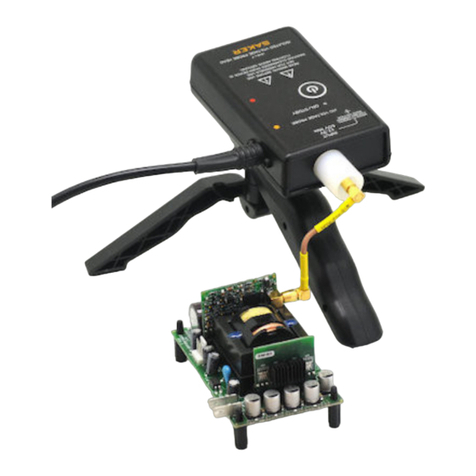INSTALLATION AND USE
This equipment is intended to be used only by trained personnel.
PLACING THE PROBE HEAD
The probe head uses a SMB connector as its input. For mechanical stability and electrical
clearance it is always recommended to install a tripod in the probe head, making sure the the
tripod is mostly made of plastic and not metal.
It is recommended to leave at least 15 mm of air space around the probe for each kV that the
probe is floated. Increase this distance if faster than 15kV/us slew rates in the common mode
voltage are expected. The higher the spacing, the lower the common mode capacitance, which
lowers the current to earth provided by the measured circuit.
Do not use the probe for measurements on mains circuits. This probe and its attenuators are
not CAT rated for use on these types of circuits according to definitions of IEC/EN 61010-031.
RECEIVER-OSCILLOSCOPE CONNECTION
A BNC-BNC cable is supplied to connect the receiver to a measuring oscilloscope. Use of a
good quality cable is recommended as it could affect the measurement.
Set the oscilloscope vertical scale at an appropriate scale given the conversion ratio of the
XFVP and attenuator (see specifications section) in question. A 50 termination is necessary
for calibration to take place successfully.
The preferred method of operation is as follows:
1. Place and secure the probe head
2. Connect the probe head to the DUT using the appropriate attenuator.
3. Connect the receiver to the oscilloscope
4. Turn on the probe head and receiver.
5. Place the unit in standby mode by shortly pressing the ON/OFF button. From this moment
there is no need to approach the probe head, since it can be turned on from the receiver.
Calibration also can take place while the DUT is energized.






























